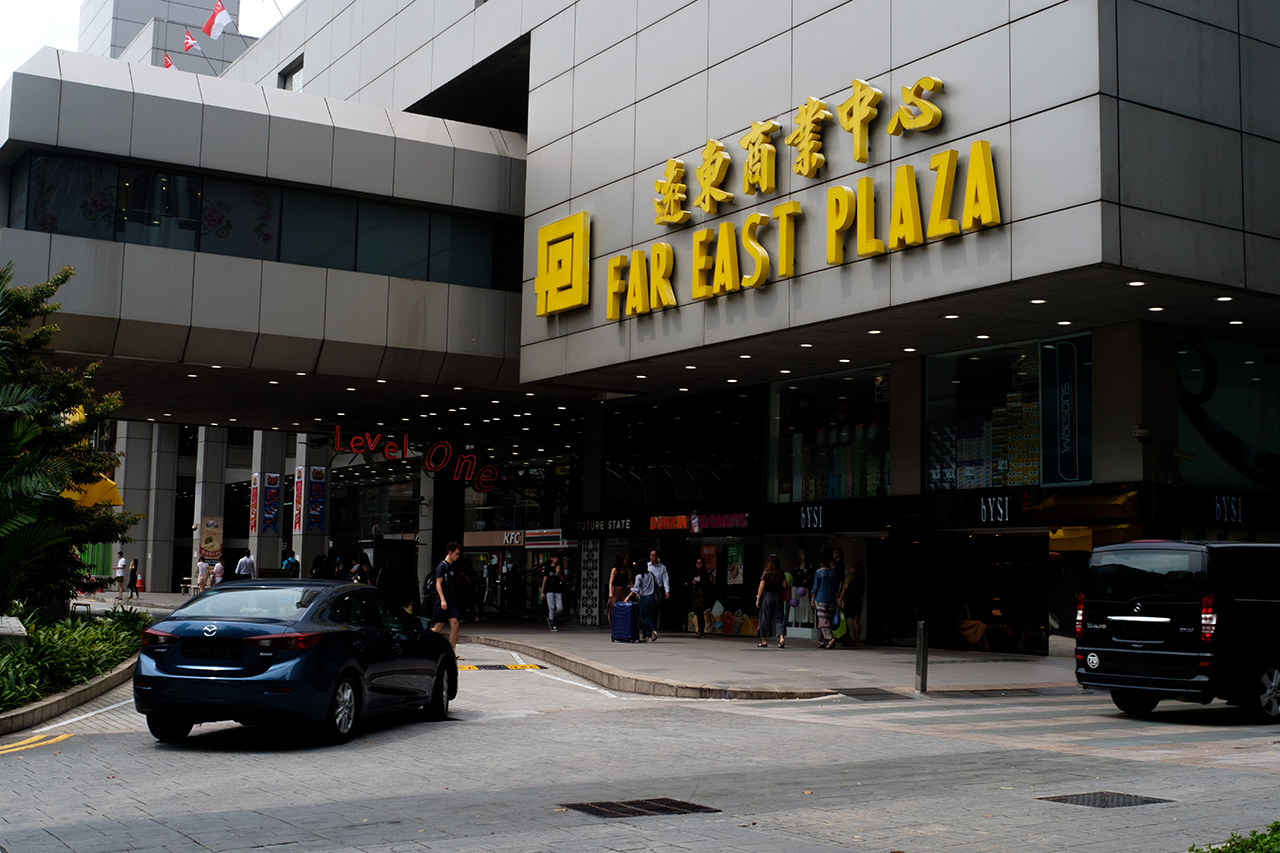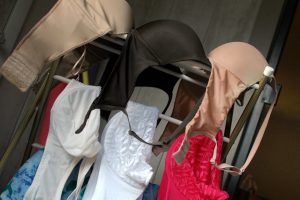Photography by Alvin Ng. Elim Chew’s images courtesy of Elim Chew.
For many of us who grew up in the 90s, Far East Plaza will always be home. Its 600+ units offered endless possibilities, and surprises once lurked on every corner.
Today, the mall has taken on an arguably bleaker veneer. A consistent smattering of tailors, hair dressers, tattoo shops, nail parlours, and small clothing boutiques now comprise its main tenants. At every turn, sterile fluorescent lights glance off flimsy shutters hiding vacant shop spaces.
While Far East Plaza still calls itself a fashion incubator, gone are the days when teenagers would congregate there after school or roam its corridors on weekends before heading to the nearby Burger King (now OverEasy) once shops closed at 9 PM. With the introduction of social media platforms like Instagram, the culture of going out to “see and be seen” no longer exists.
40 year-old event producer Douglas Khee, or Doug as his friends call him, describes how Far East Plaza used to house a whole community of independent retailers who were at the forefront of local fashion. Everyone, from customers to store owners, knew each other.
Back then, traveling wasn’t as affordable as it now is with budget airlines. Retailers could still bring clothes back from places like Bangkok’s Chatuchak Weekend Market, and they would fly off the shelves.
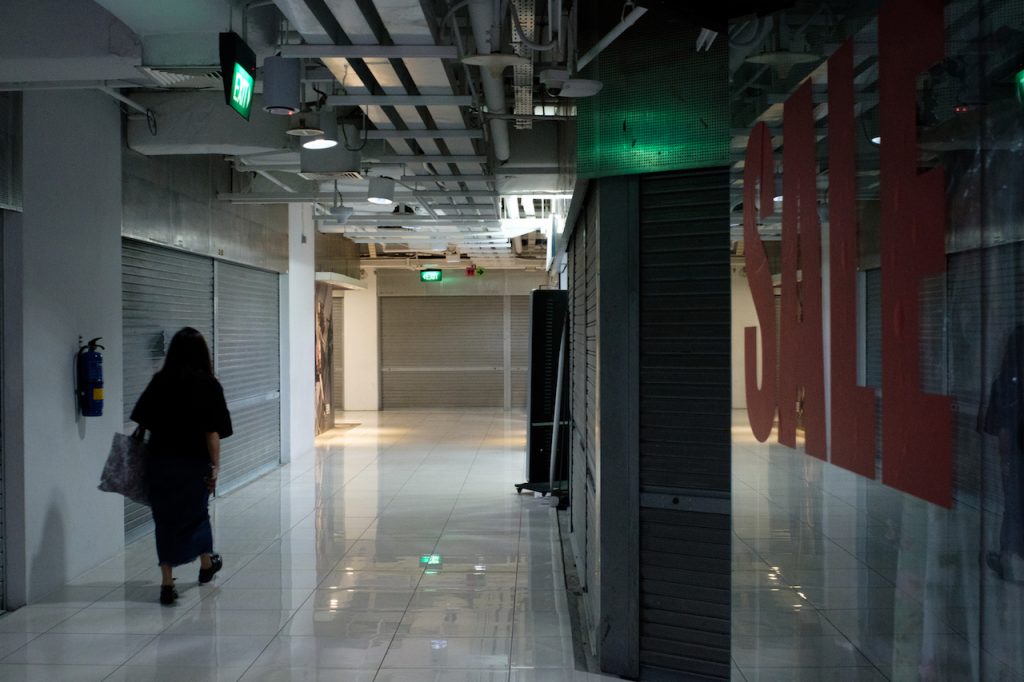
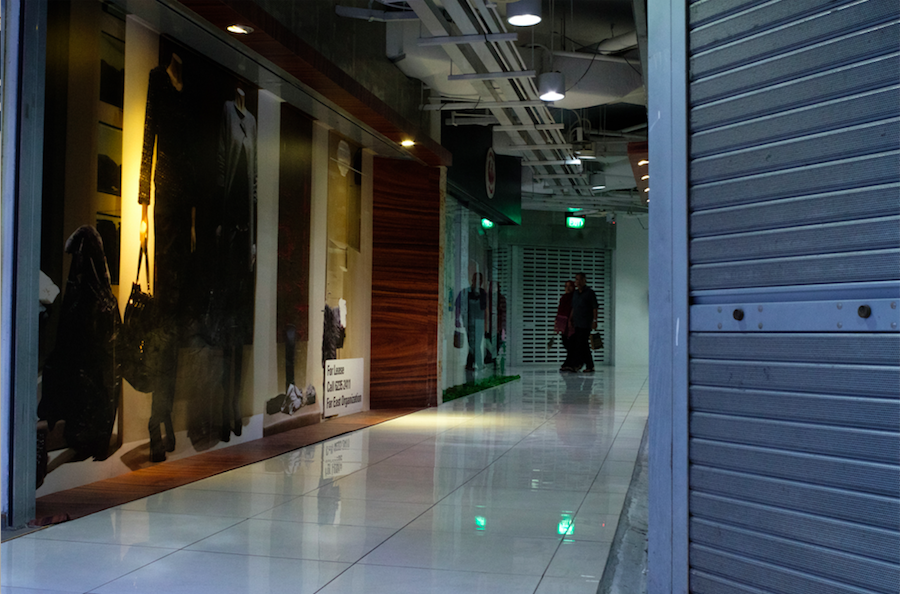
Exclusivity existed then, and fashion-conscious teens still got their inspiration from Japanese style magazines carried by bookstores like Kinokuniya. If you were the only one in Burger King sporting a brand like Porter, you were the shit.
Anthony Ho, who founded footwear brand Leftfoot in 2003, reveals that he never wanted to leave Far East Plaza. But as the retail community grew, shop owners and managing agents began moving to increase rents.
He shares that they did this by telling new tenants how guys like him were paying around $10,000 in rent when, in reality, he was really only paying about $5,000. This would prompt negotiations, and said new tenants would end up paying around $8,000. As this continued, independent retailers soon found that owning a store in Far East Plaza was no longer sustainable.
At the time, the passion and spirit surrounding retail used to be such that it inspired an entire generation of fashion-conscious individuals to start their own brands.
Doug, with two of his friends, went on to open White Room at 37 Haji Lane, a multi-label boutique with a menswear focus. Down the street, Theseus Chan of WORK was helping Comme des Garçons set up its first Guerrilla Store.
All this happened just over 12 years ago, when the Haji Lane area was still considered “up and coming”, and rent was affordable.
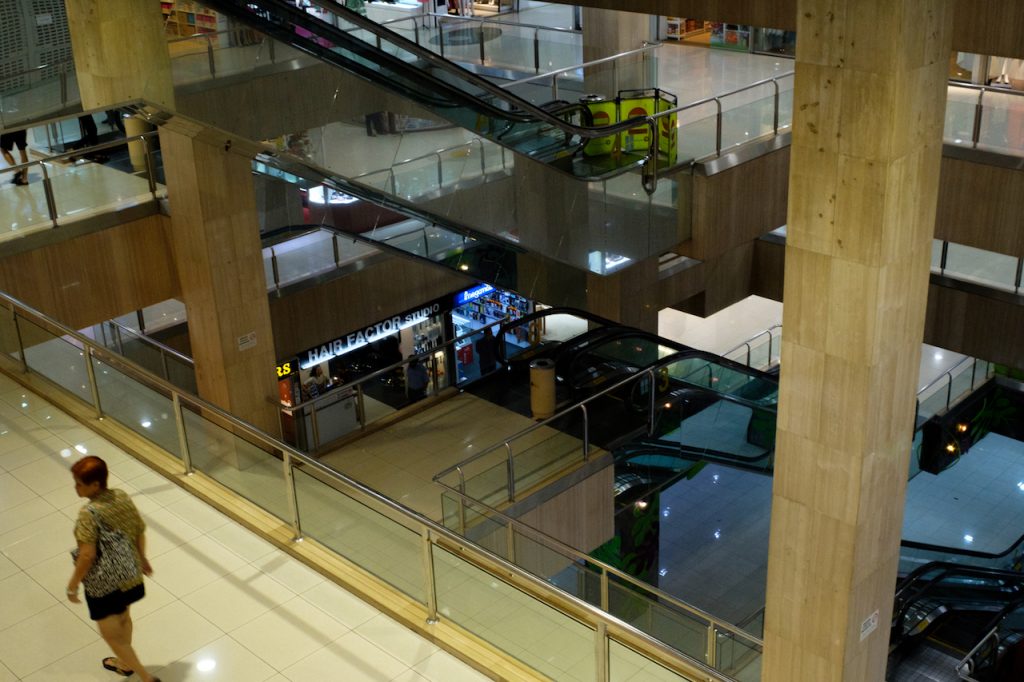
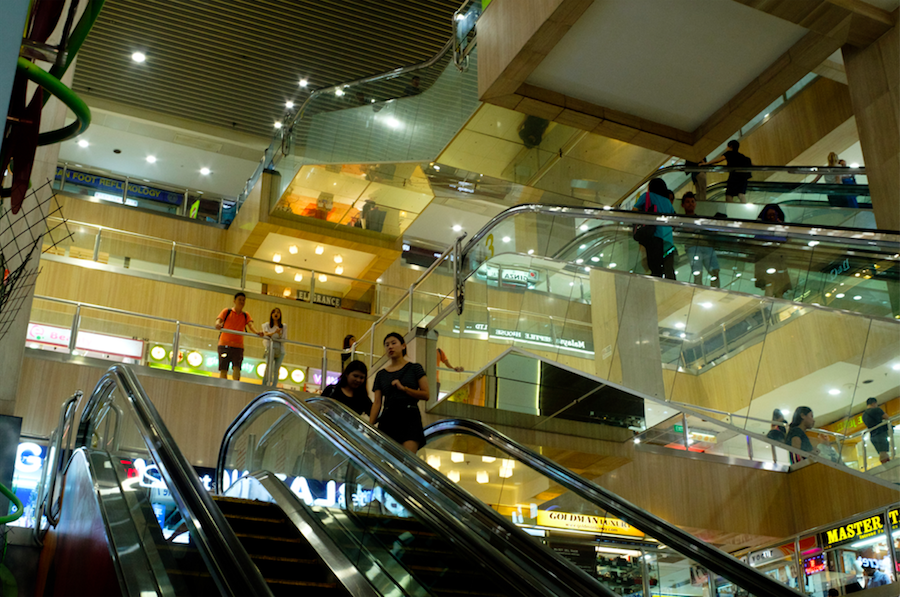
“If you want to talk about influence, it’s really 77th Street already,” Anthony says. Doug concurs, reminding me that in those days, “If you wanted to get a piercing, you went to 77th Street.” There was nowhere else.
“77th Street worked not just because it had culture, but also because it had community,” Elim says.
For both her and her sister Sulim (who handled most of the sourcing), 77th Street was never about making money. It was just about bringing what they saw in the UK to Singaporean consumers. Everything, from the music they played to the merchandise they displayed, mattered.
She recounts that one time, they brought in a pair of shoes that had two “rhino horns” sprouting out of its toecaps. No one expected it to sell, but it did. In another instance, she received a shipment of Disney themed shirts with the characters printed upside down. It was a manufacturing defect, but customers loved it, and started requesting more of them.
77th Street’s introduction of Doc Martens into the Singaporean fashion repertoire was also what gave a particular generation of angsty, punk-rock listening teenagers their signature look.

It was a different time, Wei Loong tells me.
Those days, people still went to the malls in town with the sole purpose of watching movies. Movie-goers would inevitably wander into stores like his before or after shows. Today, these same malls compete with the many that have proliferated in the heartlands.
Multi-brand stores like Rockstar were also more than just sneaker shops.
“Brands used to look for cool shops to stock their stuff,” he says, describing how the effort they put into their curation would translate into cultural relevance for the brands that multi-label stores associated themselves with. These days, while stores like Opening Ceremony in the US are still immensely influential culturally, it’s less so in Singapore.
In a way, influencers have become the new “multi-brand store”, shaping trends with what they choose to wear, tag, and sponsor on Instagram. When it comes to maintaining physical stores, many brands that choose to do so aren’t even local anymore.
A few months ago, Rockstar shuttered its Orchard Cineleisure store, and Wei Loong shares that they’re currently working on something new.
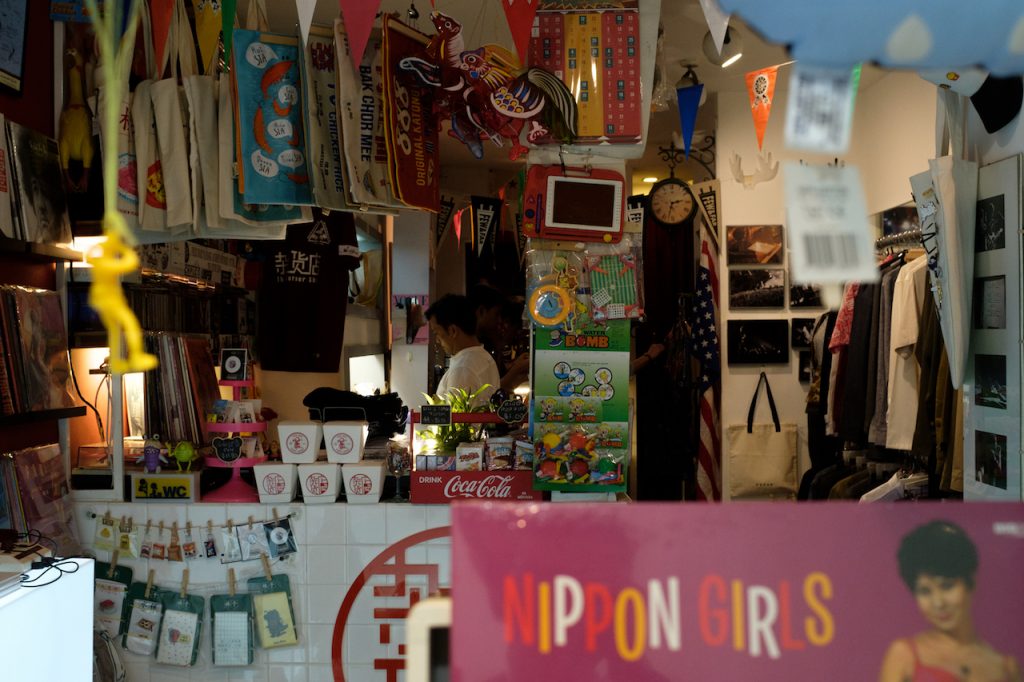
Those familiar with Far East Plaza will know of the shop that’s hidden in a corner on the third floor, right next to the public toilet. Stumbling upon it is like a throwback to a different era, not just because of its visual merchandising aesthetic, but because stepping into it still feels like what visiting Far East was like in the late 90s.
It’s the store that kickstarted the “local and heritage inspired” product offerings of multi-brand stores like Naiise and Megafash.
The Corner Shop is run by 40 year-old Jebson Tan who reminds me of a particular kind of entrepreneur—the sort who can’t necessarily explain in detail how his shop has lasted this long in Singapore’s supposedly gloomy retail scene, but is clearly guided by instinct, good taste, and a clear set of principles.
In fact, he sounds a lot like Anthony when he says, “I care about what I do, and I do it with heart.”
When Leftfoot was founded, Anthony tells me it wasn’t with the objective of making money.
“I’m really quite lucky. Back then, it’s really just try only,” he says.
“Maybe also because I was younger or what, so I thought younger better, in case anything happen I still have time to make back [whatever I might end up losing].”
Pointing to his tattoos (both his arms are covered in full sleeves), he adds: “People like us, we cannot work for other people one la.”
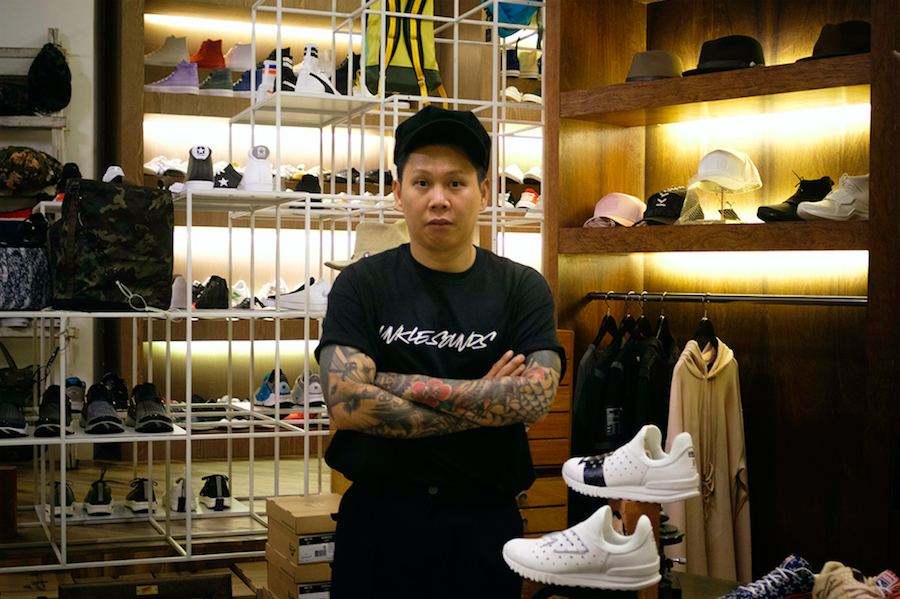
Because of what he calls his tendency to get easily bored, Leftfoot’s product range has been refreshed many times. He started out selling vintage clothing, then moved into streetwear, and then footwear. All this while, customers kept coming back. Regulars loved what he was doing.
He shares that many of his customers are Malay, and that they’re generally a lot more adventurous and fashion-conscious than Chinese folks. Since Leftfoot opened, he’s been invited to numerous of his regulars’ weddings, having pretty much seen many of them grow up.
And so it’s quite poetic that Jebson left Revoltage (also at Far East) to take over Leftfoot’s Far East space some 9 years ago, when Anthony decided to take Leftfoot to Orchard Cineleisure.
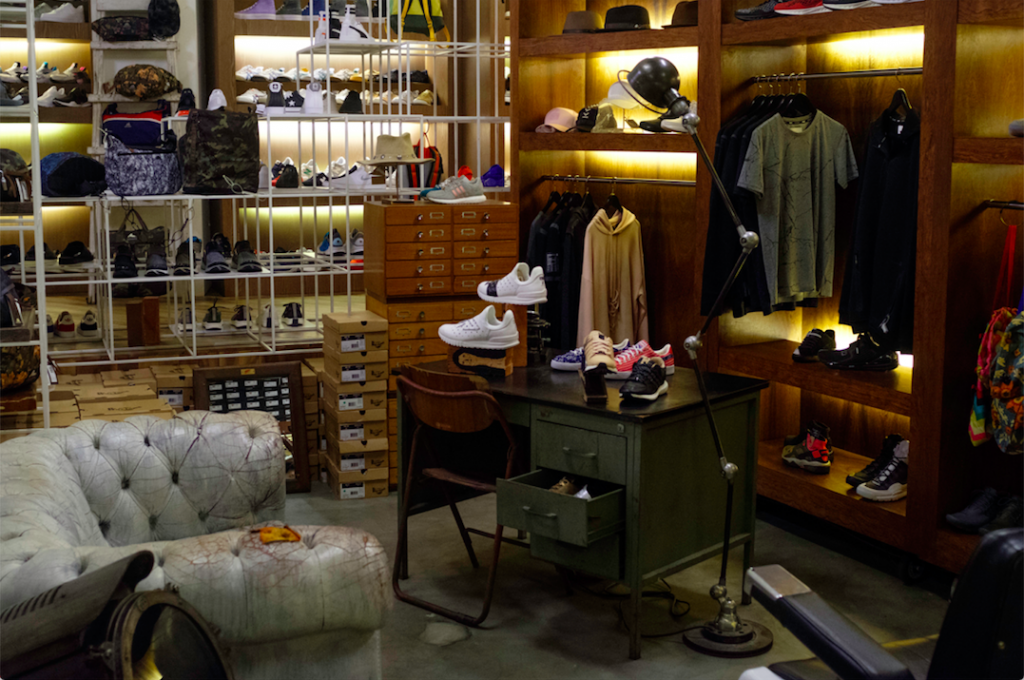
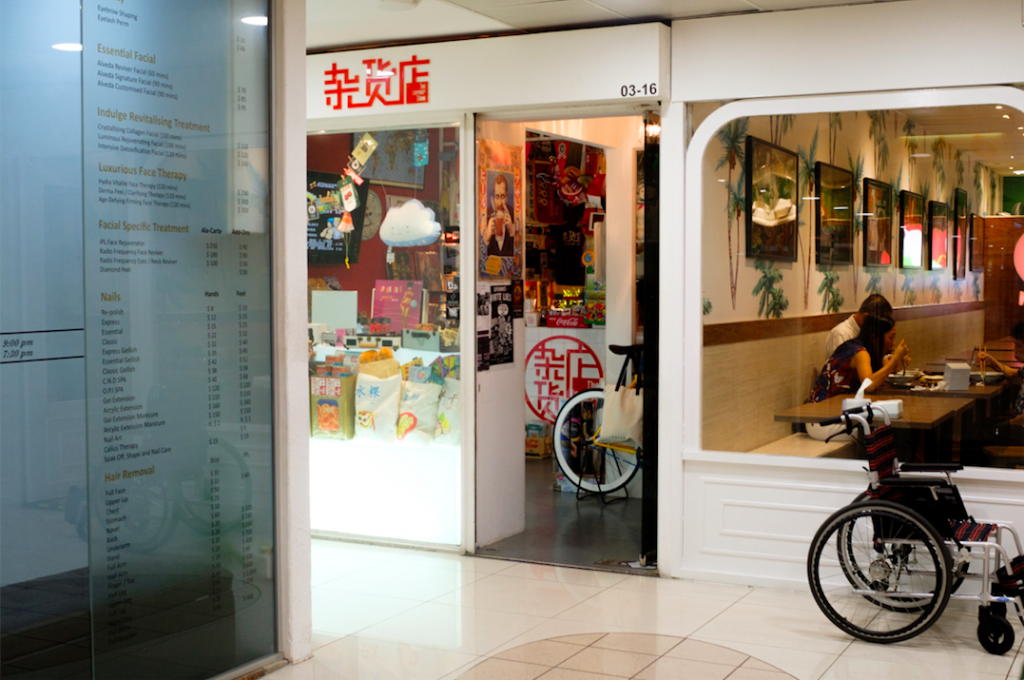
The Corner Shop’s Chinese name is Zha Huo Dian, which translates directly into ‘provision shop’. Jebson’s rationale is that this will allow him to sell anything and everything, even though he started out with a clear focus on menswear, stocking “about 70% suits”.
What he sells, however, has evolved over the years.
“It’s important to evolve,” he says, “If I just sell stuff I like, also cannot what.”
Things he didn’t like but were necessary to stock have included joggers and band T-shirts. His portable, modern Harlequine vinyl players has also sold extremely well.
Here, customer service is equally important. Jebson shares that he learnt from the best when he worked at Club 21 where he interacted regularly with high-value customers. Even though he now runs a completely different kind of outfit in Far East Plaza, he practises the exact same values.
“We treat everyone the same. And working here, I’ve learnt to speak everyone’s language,” he says.
“Every unhappy customer is an opportunity. If someone wants to return something, I happily let them. And then I just use that chance to sell him something else.”
He laments that in many retail establishments today, staff are often nonchalant and distracted. In contrast, neither he nor his staff are ever on their phones when they’re managing the counter. If anyone needs to answer any personal calls, they do it at the back of the store. Professionalism, despite the shop’s colourful and laid-back vibe, remains a top priority.
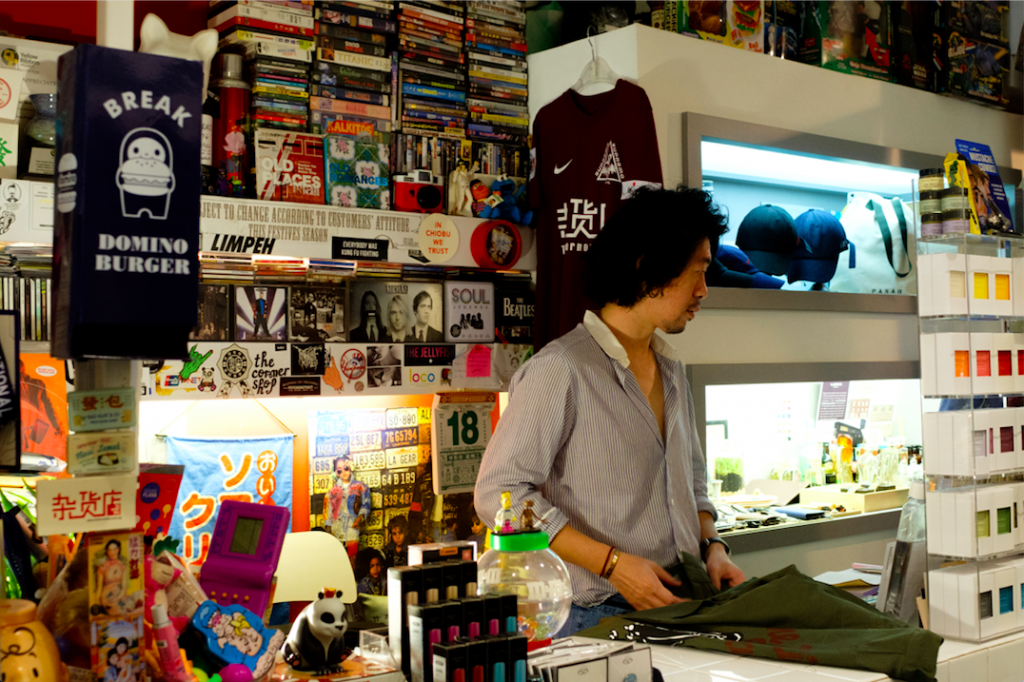
Likewise, Anthony emphasises that retail stores cannot lose their personal touch (Jebson calls this its ‘soul’). At the beginning, he deliberately chose not to have price tags on his shoes. The aim was to force the customer to ask for prices, thereby triggering interaction with the shop staff.
“People always say we damn on point or what when it comes to trend spotting. But actually it’s just that we dare to bring in what others don’t,” he says.
Laughing, he adds: “Sometimes I see a shoe damn weird or what, but I will still bring in. Because even if my tastes are crazy, my customers are even crazier!”
Having recently returned from a holiday/buying trip in Japan, he shares that whenever he attends trade shows, he never just looks at what brands have on display. He always asks for the stuff that has been kept hidden.
Likewise, The Corner Shop’s success has had nothing to do with just luck or passion. Many of Jebson’s products either cannot be found anywhere else, or are stocked in limited quantities. Sometimes he does exclusive collaborations with brands like Chota House Collective.
Over the course of two visits to his shop for this story, I learnt the appeal of this, spending close to $300 in total.
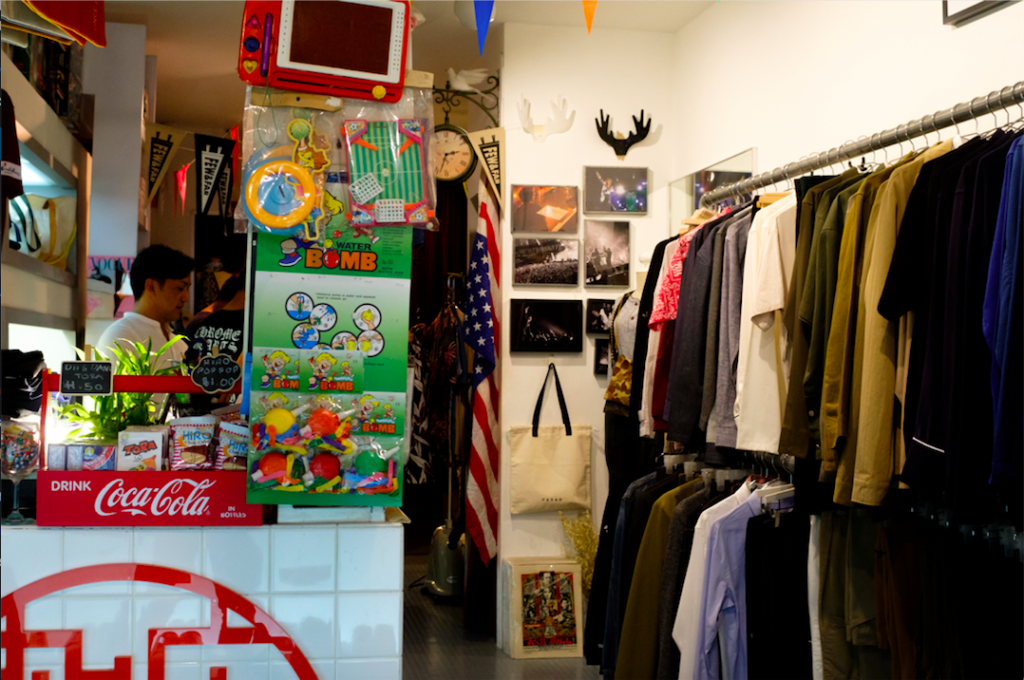
At one point in our chat, Doug and I bat around the idea of having something like Hong Kong’s PMQ in Singapore. Although PMQ occupies a prime location in Central, upcoming designers can secure rents with up to a 50% discount, the goal of which is to promote “enterprise creativity”.
While it sounds like a plausible solution, Jebson reminds me that it’s been done before. In March 2010, Parco next NEXT launched an incubator project at Millenia Walk with support from Spring Singapore. While Spring stated that its objectives were met, local designers told the media that sales had been dismal.
It’s also worth noting that PMQ is funded and managed by the Musketeers Education and Culture Charitable Foundation, a non-governmental, non-profit social enterprise.
All this then begs the question: is retail in Singapore suffering because of a lack of diversity, or a lack of support for local products? Or do Singaporeans simply lack taste, content to dress and look just like everyone else?
Should the Singapore government, whose investment arm Temasek Holdings owns a majority stake in Capitaland, intervene? After all, the REIT model, which generates revenue for shareholders by increasing rents, is unsustainable (Capitaland operates 5 REITs).
In a moment of honesty, Elim states that if this model doesn’t evolve, these companies will “only end up killing themselves”. On top of this, she says landlords must realise that their relationships with their tenants is a collaborative one.

Referring to the Korean steamboat restaurant GoroGoro, which the Chew family owns and runs, she relates that because of how hidden it is, she initially wanted her landlord’s permission and help with advertising its presence outside Orchard Gateway. However, they took some convincing.
“They don’t realise that if I don’t make money, I can’t pay my rent.”
Despite this, when I ask her if 77th Street might ever decide to make a comeback, she replies, “Who knows? Never say never.”
When I ask Jebson what he thinks the future of retail in Singapore and Far East Plaza will be, he shrugs and expresses little optimism. Doug does the same.
Both Elim and Anthony share similar sentiments—that consumer habits have moved away from fashion retail because costs of living have risen.
Anthony observes that these days, it’s all about the small incremental costs and not big ticket purchases. People want to spend on things like cafes, going to places, and doing things. They’re less interested in quality, exclusivity, and looking different.
Jebson points out, however, that we can expect the landscape of retail in Far East Plaza itself to be continuously changing.
At the moment, many of the stores cater to the mainland Chinese community. The shops here are strata titled, meaning that each individual unit has its own landlord, most of whom just rent to whoever can afford it. This is unlike most malls, where developers can more consciously curate their tenants.
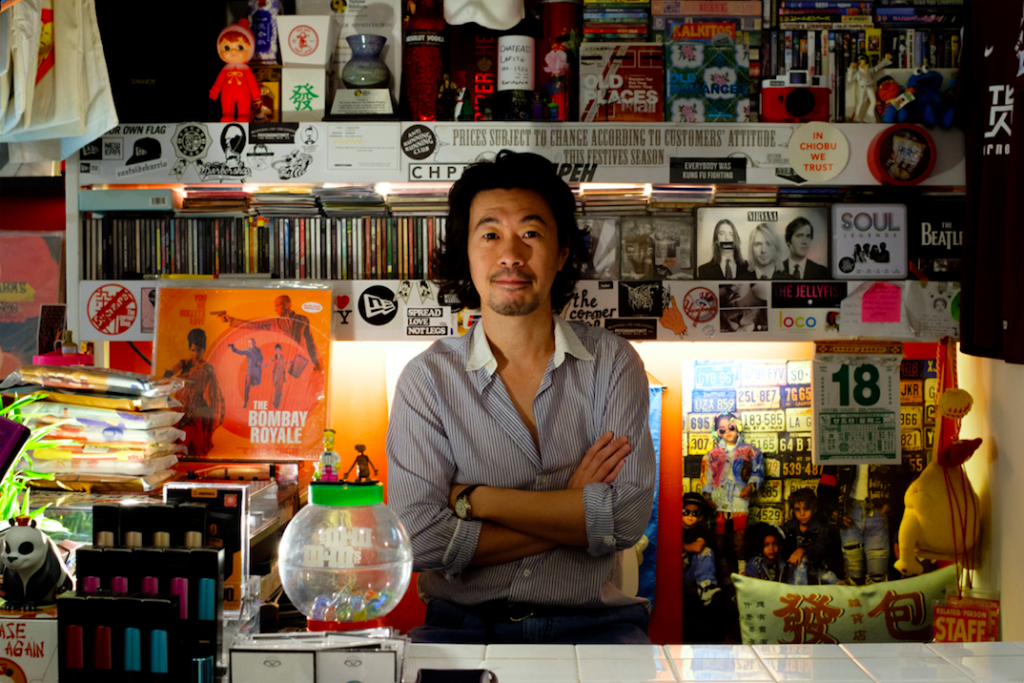
At the same time, he tells me that this has always been his dream. When he was younger, all he wanted was to run a DVD rental shop. Today, he tells me, “I’m fucking happy, dude.”
Likewise, Anthony concedes: “This kind of business, I already know it’s not going to make me rich. We sell shoes leh. So might as well have fun doing it, right?”
“The difference between online and brick and mortar is that, you don’t have people recommending you new things. Or, when you see something in person, then you can touch and see it properly, you might like it. Even though when you see it on a screen you think, I will never buy that.”
While most entrepreneurs are now jumping on the e-commerce bandwagon, Leftfoot is considering downsizing to “go back to the old days” when they had just one store. As of now, they have projects in the pipeline that are looking to bring their customers a newer experience. Whether they will succeed: “We’ll just have to wait and see lor,” Anthony says.
Jebson, on the other hand, says that when his shop’s website re-launches, it will feature only one product every month. For their upcoming 10th year anniversary next year, he’ll be collaborating with 10 local creatives for a whole new line of products.
So perhaps, unknowingly, it’s guys like these who are shaping the future of retail. If you can’t compete with the big boys like Lazada and Zalora, why bother? Why not find your own niche and create your own community?
At the end of our interview, Jebson says to me, “When you do business, it must have soul. You must keep it real. Wanting what other people want is very dangerous, toxic, and poisonous. Once that happens, you’re fucked.”

